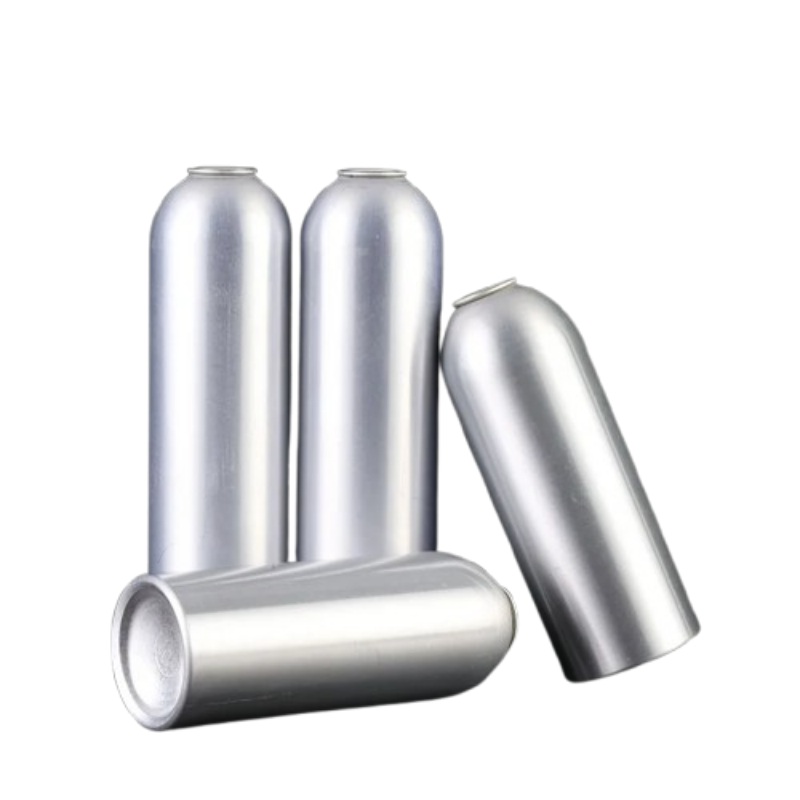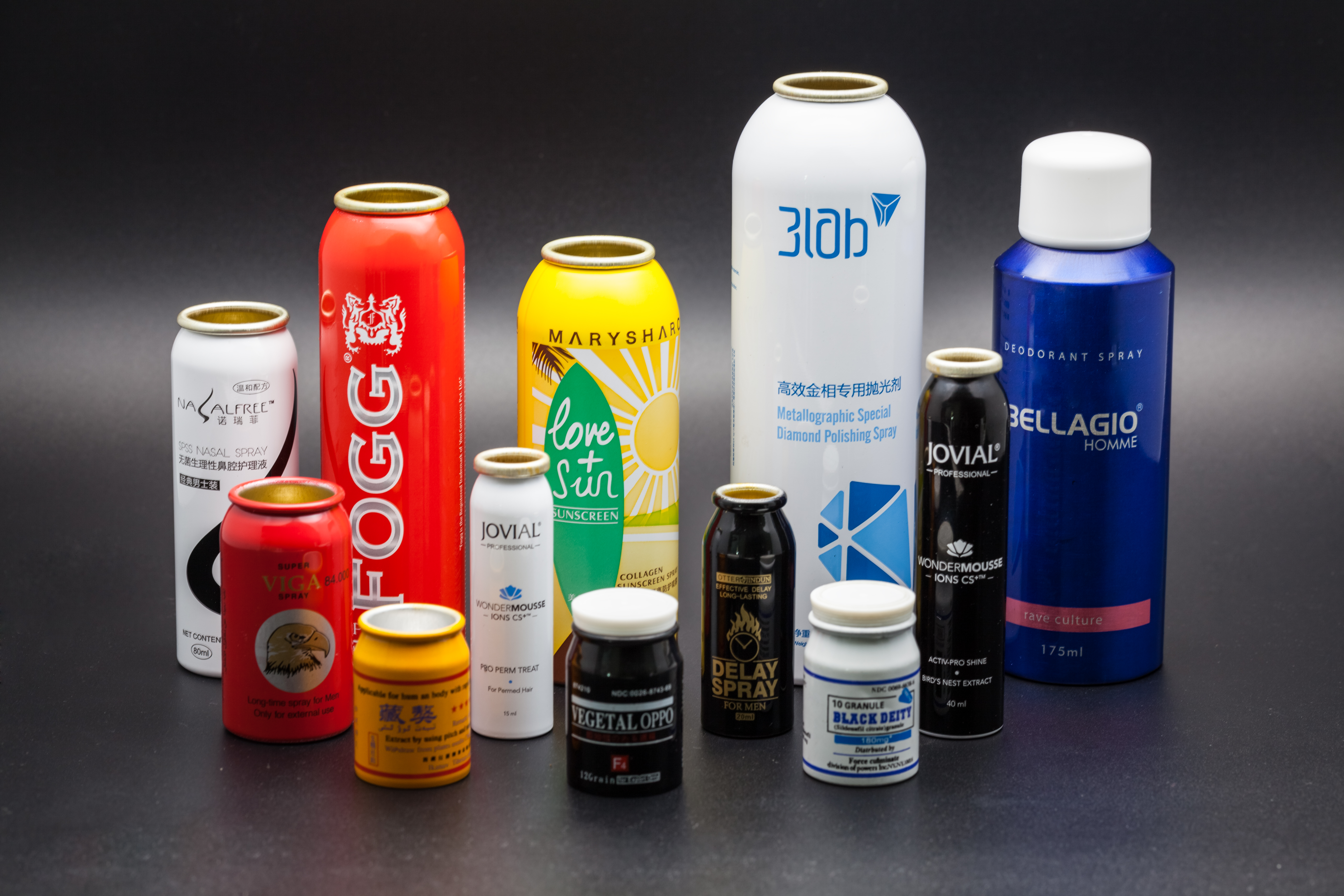השפעה הסביבתית והקיימנוביליות של חומרי עטיפה
אלומיניום לעומת פלסטיק: השוואה בין חפירת חומרים גולמיים
המשכת חומרים גולמיים עבור אלומיניום ופלסטיק מוצגת אתגרים סביבתיים גדולים בשני המקרים. האלומיניום נוצר מבאוקסיט, סוג של עפרן שרובו מוחכר מהאדמה בהיקף עצום שגורם להרס חיות ובזבוז משאבים. לא רק שהכרייה הזו מותירה צלקת על הנוף, אלא גם מאחוריה פסולת קשה לשליטה. בינתיים, מחזור החיים של הפלסטיק מתחיל עם המשכת נפט באמצעות כרייה ותהליכים של טיהור. זה גורם לשחרור גזי חממה, כמו גם זיהומים אוויריים נוספים. שניהם גורמים להשתנות אקולוגית, אך באתרים שונים ובדרגות שונות של נזק אקולוגי לנוף. התהליך של באוקסיט הוא תהליך כבד מאוד מבחינה משאבים, כפי שocumented במחקר של הסוכנות הבינלאומית לאנרגיה, לוקח הרבה אנרגיה: המחקר מעריך 1990 קג של פליטת CO2 לכל טון מטרי של אלומיניום מיוצר – והוא מגיע במחיר מחיר סביבתי גבוה.
מציאות ריציקלינג: הפוטנציאל האינסופי של אלומיניום לעומת הגבלות הפלסטיק
בנוגע ליכולת חזרה, אלומיניום זוכה על פלסטיק בזכות יכולות החזרה האינסופיות שלו מבלי להקריב איכות. זה הסיבה שבערך 75% מהאלומיניום שנוצר אי פעם עדיין בשימוש. חזרה של אלומיניום משמירת בערך 95% מהאנרגיהי שאזוריים כדי ליצור אלומיניום חדש, מה שיש לו השלכות נוספות עבור תקינות סביבתית. מצד שני, חזרה של פלסטיק מציגה הרבה קשיים כמו זיהום והחזרה הנמוכה של סוגים מסוימים של פלסטיק. למשל, בקבוקי PET יש להם נתיבי חזרה מוכרים היטב באזורים רבים, אבל לא כך עבור סוגי אריזה אחרים של פלסטיק. רק 14% מהאריזות הפלסטיקיות שנמשכות באופן גלובלי נחזרות, לפי קרן אלן מקארתור, מה שמבליט שוב את התפקיד של אלומיניום בכלכלת המעגל.
פליטי פחמן לאורך מחזורי ייצור
98% מהמחזור כולו של חומרי העטיפה) התוצאה היא הבדלים דרמטיים במשקל הפחמן שנוצר במהלך ייצור אלומיניום ופלסטיק. תעשיית האלומיניום היא אנרגטית מצריכה, והרבה אנרגיה נדרשת לייצור באוקסיט שמשתנה לאלומינה ואז לבסוף למתכת אלומיניום עם ייצור גבוה של CO2. לפי מספרים מהמכון הבינלאומי לאלומיניום, טון אחת של אלומיניום מיוצרת גוררת בערך 12 טונות של CO2. לעוממנגד, ייצור פלסטיק בדרך כלל יש לו אגרה נמוכה יותר של פוטוספרה כבר בהתחלה, חלק גדול בגלל שהתהליך הייצור של פלסטיק אינו כל כך מצריך אנרגיה אף על פי שהוא נגזר ממוצרי מאובנים. אך כאשר לוקחים בחשבון את כל המחזור – כולל תחבורה והשמדה – ההבדלים מתכווצים. הערכות מחזור חיים הן רכיב קריטי, הן מספקות סקירה של כל השפעה הסביבתית, ובכך מאפשרות החלטות טובות יותר בעת בחירת פתרונות עטיפה יותרustainabls. הערכות אלה מדגישות את הצורך לקחת בחשבון את כל השפיעת הסביבתית כדי לקבל הבנה מלאה של השפעותustainabilityכלל.
ניתוח석 분석: 고려 요소의 단기 대 장기
초기 비용: 플라스틱의 가격대비 성능 vs 알루미늄의 프리미엄
במבט ראשון, קל לראות מדוע פלסטיק נראה כמו עסקה טובה כאשר מתחשבים בקosten של החומרים. תהליך הייצור והקנה הכלכליים ישחקו תפקיד מפתח בעלות התחלתית של החומרים הללו. לפלסטיק יש ערך זול יותר, וזה בעיקר בגלל ייצור מסיבי ותהליך ייצור שדורש פחות אנרגיה. מחיר הפלסטיק לא עולה אפילו קרוב למחיר האלומיניום, ולכן זה הוא בחירה נפוצה עבור חברות שמנסות לשמור על העלות נמוכה. בסופו של דבר, אלומיניום מרגיש יותר מובנה ועוד יותר רכושי, אבל העלות התחלתית היא בעיה עבור הרבה חברות.
재활용 경제학: 알루미늄 회수의 장기적 가치
הכלכלה של חזרת שימוש באלומיניום היא מושכת מבחינה כלכלית. ועלאום, בניגוד לפלסטיק, יכול להיחדש ללא סוף ללא אובדן באיכות המטלה, מה שמביא לחיסכון גדול בחומרים גולמיים לאורך השנים. התלות המופחתת בחומרים חדשים משמשת לשימור משאבים ולהפחתת השפעה סביבתית. בהשוואה, יש מחיר לשליפת פלסטיק שאינו ברור והוא מגיע ממה שידוע טכנית כ'אפקטים שליליים', כמו זבל ונזקת סביבתית. מחקרים הראו כי חידוש אלומיניום יכול להוביל לחיסכון גדול במזומנים על המدى הארוך, מה שמגביר את היתרונות הכלכליים של שימור. חברות שמציעות השקעה בעריכת אלומיניום מפיקות תועלת גדולה מהמוצר בשתי דרכים - חיסכון בתשלום והתקשרות למטרות אקולוגיות.
השפעת תחבורה: הבדלים במשקל והוצאות דלק
בנוגע ללוגיסטיקה של תחבורה, עטיפה פלסטית היא לעתים קרובות מועדפת יותר מהבחינה של משקל (צריכת דלק נמוכה יותר וזולה יותר). אלומיניום הוא כבד יותר, מה שעשוי להעלות את עלויות ההובלה והאשליית פחמן. מחקרים בלוגיסטיקה מראים שההפרש במשקל גדול יותר של חומרים אלו גורם להוצאות דלק שונות, שמשפיעות על עלויות ההובלה הכוללות. זה מאפשר להצדיק את העלות הסביבתית גבוהה יותר של הובלה, להגן בצורה טובה יותר על המוצר ולתקן איבודים בהובלה על ידי חישוב כל התמונה והנתונים של חלקים חסרים. כאשר חברות בוחרות בחומרי עטיפה, עליהן לקחת בחשבון את הגורמים הלוגיסטיים האלה בהשוואה למטרות הסביבתיות וביקושי התקציב.
הכרת הצרכן והעדפנות שוק
תמונה סביבתית: התרושבות הירוקה של האלומיניום
האלומיניום גם מזוהה יותר ויותר כסמל להישגיות בגלל שהוא יכול להיחלץ. האלומיניום נחשב לעתים קרובות כאפשרות ידידותית לסביבה, בעיקר כי הוא יכול להיחלץ שוב ושוב ללא אובדן באיכות. התמונה הזו מתחזקת לעיתים קרובות על ידי טכניקות שיווק שמערבות את היכולת להיחלץ של האלומיניום, המראות שהחברה אחראית סביבתית. כבר ברור מהסקרים והמחקר השוקי שהצרכנים - במיוחד הדורות המילניום ו-Z - מוכנים יותר ויותר להוציא יותר על מוצרים ידידותיים לסביבה. למשל, ניילסן כבר דיווח שיותר מ-66% מהצרכנים העולמיים מוכנים לשלם יותר עבור מוצרים בר קיימא. ALSO הנטייה הזו מציעה שאכפתיות ליכולת ההחלצה של האלומיניום יכולה להיות מאוד מועילה בבניית תמונה טובה יותר של המותג ולהשפיע
עמדת פרימיום לעומת קנייה מעשית
למרות שהאלומיניום הוא יותר סביר שיענה על הקטע המבוקש, הפלסטיק הוא האלטרנטיבה הזולה יותר עבור הרוב. עטיפת האלומיניום מתייחסת לעתים קרובות לפריטים יקרים יותר, חלקית בגלל המחיר הגבוה יותר של חומרי הבסיס של האלומיניום. התפיסה המוגדלת הזו מושכת במיוחד את הצרכנים בקטע הכנסה גבוה יותר שמזינים לשלם מחיר גבוה יותר עבור איכות וקיימניציה מושגיים. מצד שני, הפלסטיק הוא זול באופן פרקטי ולכן חומר עבור האדם הממוצע. לפי אלמי תיזבי פטרה, צרכן עם הכנסה נמוכה יותר מעדיף פלסטיק. הדיכוטומיה הזו מופיעה בנתוני ניתוח שוק שמראים חלוקה חדה בחירת חומרים לפי קווי הכנסה. למרות שמותגים מובילים משתמשים בתמונה באיכות גבוהה של האלומיניום, מותגים אחרים שמתמקדים בצרכנים רגישי מחיר ממשיכים להשתמש בעטיפה מפלסטיק מסיבות כלכליות.
השתנות התendencies בעטיפות מזון וקוסמטיקה
יש תנועה מתגברת לעבר אלומיניום בתוכנויות מזון וקוסמטיקה בשל דאגות הצרכנים על בריאות ובטחון. צרכנים מעדיפים תמונה של חבילות יותר נקיות, ירוקות ומשתמשות בצורה יותר אקולוגית. המעבר הזה נחשב להיות מסורב עם דיווחי תעשייה שמעידים על גידול חזק בדרישה לחבילות אקולוגיות. חבילות מבוססות על אלומיניום מועדפות לא בגלל יכולתן להיחדש, אלא בגלל שהן מספקות הגנה מחסנית גדולה יותר כדי לוודא את שלמות המוצר. מגמת התעשייה של חבילות מזון וקוסמטיקה לעבר האלומיניום תקבל תאוצה נוספת כאשר ייכנסו לשווקים צרכנים נוספים שמאכילים את עצמם בצורה בריאה יותר והם מודעים לסביבה, מה שייציב עוד יותר את תפקידו של האלומיניום כחבילה אקולוגית בתחום זה. קואליציית החבילות הקיימות גם כן מאשרת את המגמה הזו, כשצרכנים מחפשים יותר חומרים שמתאימים לתשוקתם להישאר בריאים ולשמור על העולם סביבם.
תכונות חסימה וגנה על המוצר
יכולת החסימה של אלומיניום
במיכוש יש להגן על התוכן מפני אור, כולל במיוחד מהאור האולטרה-סגול (UV), כדי לשמר את שלמותם של מוצריםים רגישים כמו מזון וקוסמטיקה. האלומיניום בולט במיוחד כאן מכיוון שהוא המaterial הכי טוב בהסתרת האור, ולכן הוא ימנע מהדברים שמכוסים בו להיות בעלי תקופת חימר ארוכה. מחקרים מדעיים מוכיחים שהאלומיניום הרבה יותר טוב בהסתרת אור מאשר פלסטיק, והאור הוא המכשול הגדול ביותר לתחייבות אופטימלית. למשל, מחקר השוואה מראה שהגנה באמצעות אלומיניום נגד אור אולטרה סגול שומר בצורה הטובה ביותר על תכונותיהם הנוטריציונליות והאסתטיות של המוצרים הניתנים לצריכה.
עמידות לחות בסביבות לחות
סכרת רטיבות היא אספקט אחר חשוב של אריזה, במיוחד באזורים לחים שבהם הפסד המוצר יכול להיות בעיה מרכזית. להגנה מפני רטיבות ניתן להשתמש באלומיניום כדי ליצור סילון מצוין יותר, פלסטיק חוסם לרטיבות, כדי לוודא שאזורי אריזה חוסמים לרטיבות, כמו אלו של תרופות ומזון, לא ייפגעו מריחף. חשיבותה של אריזה חוסמת לרטיבות מתבטאת בהישומים בעולם האמיתי, ובמיוחד בתעשיית התרופות, שמירה על צורת המוצרים היא חיונית, ולכן האלומיניום הוא מחסום שימושי למניעת כניסת רטיבות. למעשה, מחקרים בתעשייה מראים שהאלומיניום מצליח בצורה עקביות טובה יותר בבדיקות מחסום לרטיבות מאשר הפלסטיק, וכזה הוא נשאר בחירה הפופולרית ביותר עבור מוצרים רגישים לרطوبة.

ביצוע perfomance מחסום חמצן לרעננות
תפקיד המניעת חדירת חמצן הוא חשוב להארכת חיי המדף של פריטים קלים לפסולת ואלומיניום מצטיין בכיוון זה. המבנה הצפוף של האלומיניום מציע מניעת חדירת חמצן מתקדמת יותר, מה שאומר שחמצן אינו חודר לאריזה ולכן המזון נשמר לפחות بنفس רמת האיכות כשהוא יוצא כמו כשנכנס לתוך המיכל. מצד שני, פלסטיק נוטה להציע הגנה פחות טובה נגד חדירת חמצן. תוצאות בדיקות ביצועי אריזה מצביעות גם כן על כך שאלומיניום הינו יעיל יותר מפלסטיקים במניעת חדירת חמצן, מה שמוביל לחיי מדף ממושכים וירידה בתשחית של מוצרים רגישים לחמצן כמו מוצרי חלב ומקשה. לכן האלומיניום הינו הבחירה המثالية לשירותי מזון או מתקנים תעשייתיים הרוצים לשמור על טריות המזון לתקופות ממושכות.
העדפות חומרים לפי תעשייה
סטנדרטים פרמצבטיים: מדוע האלומיניום משלט
בתעשיית התרופות, התקנות קפדניות וחומרים שנותנים ביטחון מחדש של חוקיות ובטיחות חשובים ולכן אלומיניום הוא בחירה פופולרית של אריזה. העובדה שאלומיניום הוא מחסום מספק מבחינת לחות וחמצן חשובה לשמירה על יעילותם של תרופות. זה יאפשר את התרופות להיות מאוחסנים במצב נקי ויעיל. דוחות של התאימות של התעשייה לעיתים קרובות מתייחסים לשימוש הגובר באלומיניום באריזה תרופתית על ידי הדגשה על יכולתו של המתכת לעמוד בדרישות הקשות של הרשויות. השימוש באלומיניום הוא לא רק על שמירה על שלמות המוצר אלא גם על בטיחות מזון כדי לעמוד בהנחיות תעשייתיות קפדניות.
תעשיית משקאות: תיבות אלומיניום כמגינים עליונים
בקבוקי אלומיניום הם מלכי עולם המشروות בעיקר בגלל שהם פשוט הטובים ביותר באחסון ושימור דברים, בנוסף הם שומרים על הטעם של כל מה שנמצא בתוכם. התכונות הייחודיות של האלומיניום (החומר הבסיסי הזה!) - במיוחד הקפצה שלו מול אור וחמצן - וההתאמה שלו לשמירה על המشروות כפי שתוכננו, כך שיישמרו טעימים לתקופות ארוכות יותר, גורמות לכך שהוא הפארסה בעסק של אריזת משקאות. יש נתונים שמייצגים העדפת שוק עם קבוקי אלומיניום שמוכרים יותר מכל חומר אחר לאריזת משקאות. יתרונות אלו, בצירוף ה recyclability של האלומיניום, מאפשרים למותגים לחזק את הדגשה הירוקה שלהם, וכך למשוך צרכנים מודעים לסביבה. עם אריזת קבוקי אלומיניום, חברות יכולות להגן על המוצר שלהן, וכן להגן על המותג שלהן.
אריזת מזון: שיווי משקל בין טריות וvenience
תפוחי האדמה עונים על אתגר השמירה על מזון, אך גם להעניק לו נוחות לצרכנים שוב. אלומיניום מספק הגנה יוצאת מן הכלל נגד גורמי חיצוניים כמו אור, גז ורווידות, מה שמשמר את תקופת השמירה של המזון בצורה יעילה. משקלו הקל ותכונותיו התפורמות מאפשרים גם מקלים עיצובי חבילה גמישים לשימוש נוכחי, שהם ידידותיים לצרכן ולכלכלה. כל מחקרי השוק מאמתים שהצרכנים מודאגים בנוגע לרעננות ונוחות כאשר מדובר באיך מזונם חבול, והאלומיניום תמיד מספק. חבילות אלומיניום מציעות פתרון זמין ומתאימות לצרכים של הצרכן ושימור מזון.
שאלות נפוצות
מה ההשפעות הסביבתיות של תבניות אלומיניום ופלסטיק?
המשיכה והייצור של אלומיניום ופלסטיק יש להם השפעות סביבתיות משמעותיות. ייצור אלומיניום כולל כריית בוקסיט שיכולה להרוס חלקי מחי, וייצור פלסטיק תלוי בכריית נפט, מה שגורם לשחרור גזי חממה.
מדוע אלומיניום נחשב כסustainable יותר מפלסטיק?
אלומיניום הוא יותר תקף סביבתית בגלל שאפשר למחזר אותו מספר פעמים ללא הגבלת איכות. מחזור אלומיניום שומר על עד 95% מהאנרגיהrgy בהשוואה לייצור אלומיניום חדש, בניגוד לפֶלַסְטִיק שמחזורו מוגבל.
איך השוואת הפליטי הפחמן של אלומיניום ופלסטיק נראית?
ייצור אלומיניום דורש אנרגיה רבה יותר ומפריש רמות גבוהות של דו-חמצני קרבון בהשוואה לפֶלַסְטִיק. עם זאת, הערכות מחזור חיים, כולל תחבורה והשמדה, יכולות להוביל להשפעות כוללות דומות.
מה ההבדלים במחירn העלות בין שימוש בעטיפות אלומיניום ופלסטיק?
פלסטיק זול בהתחלה לייצור ולובש בשל משקלו הקל יותר, בעוד אלומיניום מציע חיסכון לטווח ארוך באמצעות מיחזור יעיל, תוך הפחתת התלות בחומרי גלם חדשים.
כיצד תפיסת הצרכן משפיעה על בחירת חומרי האריזה?
הצרכנים מעדיפים יותר ויותר אלומיניום בגלל התמונה הידידותית לסביבה והתחושה המובחרת, שיכולה לשפר את תפיסת המותג. עם זאת, פלסטיק נשאר פופולרי בשל רמת המחיר שלו, במיוחד בהקשרים של שוק המוני.
מה הופך אריזה אלומיניום מתאים יותר לתעשיות מסוימות?
תכונות המחסום המצוינות של אלומיניום הופכות אותו לאידיאלי עבור תרופות ומשקאות. הוא מונע בפועל אור, חמצן וריחות, מוסיף לתוחלת השימוש של המוצר ושומר על איכותו.
תוכן העניינים
- השפעה הסביבתית והקיימנוביליות של חומרי עטיפה
- ניתוח석 분석: 고려 요소의 단기 대 장기
- הכרת הצרכן והעדפנות שוק
- תכונות חסימה וגנה על המוצר
- העדפות חומרים לפי תעשייה
-
שאלות נפוצות
- מה ההשפעות הסביבתיות של תבניות אלומיניום ופלסטיק?
- מדוע אלומיניום נחשב כסustainable יותר מפלסטיק?
- איך השוואת הפליטי הפחמן של אלומיניום ופלסטיק נראית?
- מה ההבדלים במחירn העלות בין שימוש בעטיפות אלומיניום ופלסטיק?
- כיצד תפיסת הצרכן משפיעה על בחירת חומרי האריזה?
- מה הופך אריזה אלומיניום מתאים יותר לתעשיות מסוימות?






